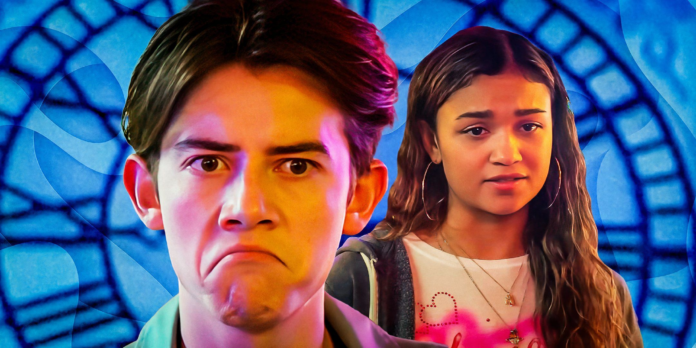Warning! This post contains spoilers for Netflix’s Time Cut.
Although Netflix’s Time Cut focuses less on explaining how its time travel works, it drops a few subtle clues about how its characters go back and forth between timelines. Primarily set in 2003, Time Cut sets out to be another addition to the long list of coming-of-age films that attempt to spin their narratives into a sci-fi yarn. However, despite its best efforts to rank among the better films in the sub-genre, Time Cut has failed to leave its mark among viewers and critics and holds an underwhelming Rotten Tomatoes score of 13%.
The movie’s low critical ratings highlights how it gets many things wrong and struggles to establish itself as a unique addition to the genre. However, despite its pitfalls, the Netflix horror movie also manages to get a few things right. For instance, unlike most time travel movies, Time Cut attempts to explain how exactly its central time machine works. The explanation is not scientifically accurate in any way, but it is hard not to appreciate how the film does not completely gloss over the mechanics of its time travel.
Time Cut’s Time Machine & Anti-Matter Explained
The Movie’s Portrayal Of Time Travel Is Heavily Fictional
Close
Almost midway through its runtime, Time Cut features a scene in which Lucy and Quinn try to figure out how the central time machine works. They learn it fires a laser from one end and anti-matter through the other. According to the movie, the interaction between the matter and anti-matter particles from the two points in the machine opens a microscopic wormhole. This wormhole, in turn, becomes a gateway for the characters to travel to any point in time.
Related Time Cut Cast & Character Guide Apart from walking through a compelling time travel slasher drama, Netflix’s Time Cut also features memorable characters played by talented actors.
While it is interesting how the movie tries to involve some scientific gobbledygook in its explanation of time travel, a lot of it does not really make sense. The concept of entangling matter and anti-matter can have intriguing implications in quantum mechanics — where matter is any physical substance that has mass and occupies space, while anti-matter consists of corresponding particles that have the reversed charge, parity, and time of




